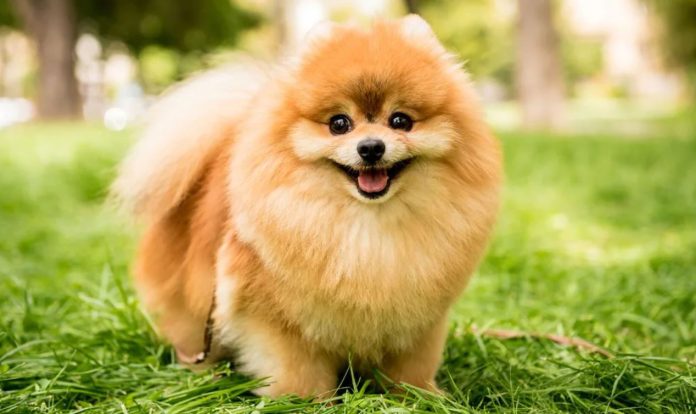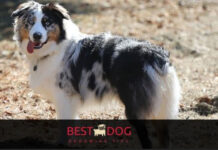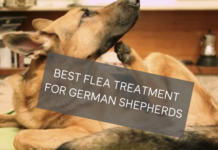The Pomeranian is the smallest breed of dog. It was originally bred to be a companion and lapdog for royalty in Poland, Germany, and Sweden.
It has unique features like its long fluffy coat and small size that make it look like a toy dog. The Pomeranian is also known as the Pom or Teddy Bear Dog because it resembles one!
Breed Overview
| Group | Toy |
| Height | 6 to 7 inches |
| Weight | 3 to 7 pounds |
| Coat | Long double coat |
| Coat Color | Comes in many colors, though the most common are red, orange, cream, sable, black, brown, and blue |
| Life Span | 12 to 16 years |
| Temperament | Bold, alert, lively, affectionate |
| Hypoallergenic | No |
| Origin | Germany/Poland |
Characteristics of the Pomeranian
Pomeranians tend to have bold and lively personalities, despite their small stature. They can act as alert watch dogs but are also affectionate toward their owners.
| Affection Level | High |
| Friendliness | Medium |
| Kid-Friendly | Medium |
| Pet-Friendly | Medium |
| Exercise Needs | Medium |
| Playfulness | Medium |
| Energy Level | Medium |
| Trainability | Medium |
| Intelligence | High |
| Tendency to Bark | High |
| Amount of Shedding | Medium |
History of the Pomeranian
The Pomeranian was originally bred in the 1700s to be a companion dog for royalty. It was first bred by Eberhard Gockel, who was an aristocrat from Denmark.
He crossed his Spitz-type dogs with Italian greyhounds and French toys to create the Pomeranian breed.
The breed became popular among European royalty in the 1800s because of its small size and beautiful long coat that made it look like a toy dog.
In the late 1800s, Pomeranians were introduced to North America by a Canadian woman who brought several of them back with her after visiting Europe.
The breed became popular in the United States because of its small size and beautiful long coat, making it look like a toy dog.
Pomeranian Care
It is important to train and exercise Pomeranians regularly, as their thick coat requires a fair amount of upkeep.
Plus, owners must be cautious about hot weather—as well as with predators that may show up in unexpected places (such as the neighbor’s yard or an empty lot)—when letting them roam free.
Exercise
Pomeranians love to play and need a lot of exercises. They are very intelligent and enjoy mental stimulation, but they require a lot of attention because they are very vocal. Poms can be trained for agility, which would be physically and mentally stimulating for them.
Grooming
Grooming is a highly important part of owning any dog breed. While Pomeranians are not hypoallergenic, they do shed a lot and must be brushed daily to remove dead hair and distribute oils from the skin. Their double coat will require regular grooming to keep it healthy and shiny.
Training
Once you’re ready to get a Pomeranian, it’s time to start training! Training your Pomeranian is important for two main reasons. First, it will help you establish a good relationship with your new dog. Second, it will ensure that the two of you can live together peacefully and happily.
Training should begin as soon as possible after bringing home your new puppy—puppies learn quickly and will pick up anything they see or hear very easily without fail.
You’ll need to establish yourself as the “alpha” or leader in order to properly train your dog; this means that they’ll naturally look up to you for guidance and direction. Your puppy should know from the moment he arrives at his new home that he must follow all of the rules set by his owner (that would be you).
Common Health Problems
Pomeranians are typically healthy dogs. But they are prone to a few common health conditions, including:
- Luxating patella (kneecaps sliding out of place)
- Collapsing trachea
- Hypothyroidism
- Congestive heart failure
- Seizures
- Progressive retinal atrophy (a degenerative eye disease)
Common Health Problems
Pomeranians are generally healthy dogs but can be susceptible to several common health conditions.
- Patellar luxation (kneecaps sliding out of place)
- Collapsing trachea
- Hypothyroidism
- Congestive heart failure
Diet and Nutrition
Most Pomeranians are prone to weight gain, which is why a good diet and exercise routine is so important for keeping your Pom healthy. Their high metabolism means they need more calories than other breeds.
Pomeranians need access to fresh water, but don’t overdo it on the treats! If you’re concerned about your dog’s weight, talk with your veterinarian about what food would be best for him or her.
Where to Adopt or Buy a Pomeranian
If you’re interested in acquiring a Pomeranian, check your local animal shelter and breed-specific rescue groups for dogs that need homes.
Be sure to factor in the time and energy required to train a dog—even one as cute as this breed tends to be! Expect to pay between $1,000 and $2,500 for a new puppy.
Many organizations can help you find a reputable breeder or rescue, including:
More Dog Breeds and Further Research
If you are considering owning a Pomeranian, be sure to do your homework. Talk with other owners and find out if the breed is right for you.
If you’re interested in similar breeds, check out:
- Brussels Griffon
- Papillon
- Yorkshire terrier
There are many dog breeds to choose—find the one that’s best for you!
FAQ
Pomeranians were bred as companion dogs. They are known to be loyal and affectionate. Their small size makes them perfect for apartment living and traveling.
Pomeranians are great family dogs. They are very affectionate and loyal to their owners. The breed is known for being playful, but they also enjoy cuddling on the couch with their people.
Pomeranians can be great apartment dogs, but they do need daily exercise. They have a high energy level and require regular walks or playtime to keep them happy and healthy.
Conclusion
Now that you know all the details about Pomeranians, what do you think? Are they right for your family? We hope we’ve answered some of your questions and given you an idea of what it takes to have a happy and healthy Pom.
If you think this breed is right for you, we encourage you to do some more research on the breed before making any decisions. There are many resources available online as well as in person from breeders who can answer any questions that might come up along the way!












